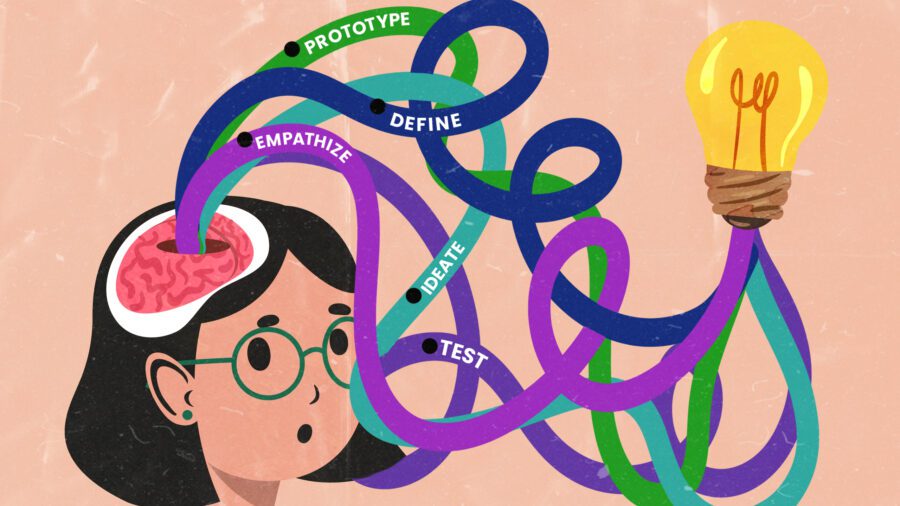
Did you know that the average pet account on social media has over 1,000 followers? That’s more followers than most personal accounts have.
In other words, animals — pets in particular — take up a special place in people’s hearts whether or not they’re the owner. Additionally, recent data states that pets can play a powerful role in an individual’s mental, physical, and social health.
Whether you’ve wanted extra motivation to be more physically active, sat alone wishing for someone to comfort you, or just moved to a new place and need help making friends, getting a pet might be your next best move!
In this article, we will unpack the therapeutic benefits of owning a pet and two dog training tips from the Dog Whisperer himself, Cesar Millan.
How Pets Help with Anxiety, Loneliness, and Mental Health
Did you know that 33% of adults say they are lonely? One study said that three out of five people are lonely! Also, an estimated 19.1 percent of people in the United States alone have an anxiety disorder.
Collectively, we are craving companionship, a calmer lifestyle, and a safe place to be seen. Pets are increasingly recognized as effective companions for mental and emotional support.
Dogs, in particular, are known for being incredibly loyal and empathetic. Dog training expert Caesar Millan shared an Instagram video of a young woman being comforted by her dog during a panic attack.
While pets provide immense support to their owners through companionship, they also help owners improve their lifestyles. Here we will highlight six ways pets improve an owner’s lifestyle.
Owning a pet increases physical activity. Whether taking your dog for a walk or playing with a pet, pet owners are more likely to be physically active. In fact, dog owners generally walk 22 minutes a day more than people without dogs.
Owning a pet increases social interactions. Have you ever asked a stranger what their dog’s name was or if you could pet their dog? Most of us have. Animals break conversational barriers. Additionally, dog parks are a great place to make new friends with common interests.
Owning a pet helps create structures and routines. Feeding, grooming, and making sure your pet has a clean place to live requires intention. These tasks often require creating a routine and sticking to it.
Owning a pet creates a sense of meaning. Days can become monotonous, especially if you work from home. Having a pet that depends on you breaks up the monotony and gives you something to get out of bed for each day. Pets have been instrumental in helping older adults recover a sense of meaning in their lives.
Owning a pet can decrease anxiety. Petting animals provides sensory relief, and stroking a pet quickly manages stress and reduces blood pressure. Cesar Millan shared a story of how a pet’s companionship helped a Navy Veteran overcome anxiety and PTSD and return to daily routines like grocery shopping.
Owning a pet increases positive attitudes, especially gratitude. What are you thinking about when stroking your pet? You’re probably thinking about all the hard and happy things in life, but somewhere in all those thoughts, you probably consider how grateful you are for your pet.
That’s powerful! Gratitude releases hormones in our brain that lead to happiness. Gratitude practices — in any form — are a critical ingredient to a healthy lifestyle!
Pets Improve Social Recognition and Self-Care
Bonding and building a life alongside people who were essential to you used to be a part of everyday life. It was necessary to depend on your family members and neighbors to live.
Today, bonding and close-knit communities have become a luxury instead of a necessity. As a result, social recognition, which happens when you identify someone significant to you and is vital to a healthy social life, is becoming something we need to pursue.
The bond between a mother and her baby is social recognition, but a similar bond occurs between a pet and its owner. The Guardian wrote, “[H]ealthy social bonds can play a key role in mental health; without them, we become lonely, depressed and physically unwell. And pets, it seems, can fulfill that role.”
Pets play an important role in helping owners create healthy external bonds, but they also help owners create healthy bonds with themselves through improved self-care.
Psychologist June McNicholas explained that pet owners often practice better self-care, “Pet care and self-care are linked. When you take a dog out for a walk, people talk to you. … When pet owners leave the house to buy pet food, they’re more likely to buy food for themselves, and when they feed their pet, they’ll sit down to eat too.”
Pet ownership improves social bonds and self-care practices.
Best Pets for Mental Health
After reading about the many therapeutic effects of owning a pet, you’re probably wondering, What pet should I get?
It turns out that dogs aren’t the only pets that improve life! Here’s a list of five pets for improved mental health, four of which don’t include the level of involved training required by a dog.
- Dogs are great pets, often known for their loyalty and unconditional love. They have been proven to help reduce anxiety, boost self-esteem, and improve social connections.
- Cats are also popular pets. They are known for being independent and require minimal care while helping owners with loneliness, depression, and anxiety.
- Rabbits tend to be smaller pets with a long life expectancy and are an excellent option for first-time pet owners. They are social butterflies and are often used in mental health therapy to help patients feel calm.
- Birds aren’t usually on the top of one’s list for a companion; however, they are known to be loving and intelligent. Some birds have even been explicitly bred for human companionship. After all, you can have conversations with some bird species!
- Hamsters tend to be extremely cuddly creatures and are a great option if you’re looking for a low-key companion pet. In fact, hamsters have been instrumental in helping with patient stress in an Assisted Animal Therapy program in London.
One of the top mental health benefits of having a pet is the responsibility they require because it inspires owners with a sense of meaning. That being said, having a pet is a responsibility of time, energy, and money. Choose your pet wisely, considering your lifestyle, income, and personal needs.
If you choose to get a dog, it will be essential for you to train it so that your dog is pleasant to be around and doesn’t cause you extra stress through their behavior.
Join In 200 Million+ On The Journey to Greatness
Dog Training Tips from the Dog Whisperer
If you’re getting a dog to help with anxiety, loneliness, or mental health, it’s vital that their behavior is pleasant and doesn’t cause extra stress.
You’ll want to conquer two skills with your dog: “master the walk” and having them listen to you.
Cesar Millan, also known as the Dog Whisperer, is renowned for his gift of bonding with dogs, retraining their behavior, and helping their owners do the same. Regarding dog training, he is the Greatness go-to expert, so the following tips are inspired by content from his blog.
Master the Walk Step #1: Walk in Front of Your Dog
Dogs are driven to lead the pack or follow the leader. Walking in front of your dog asserts your authority as the leader. This means you should be the first to walk out the door and back in. While walking, your dog should be beside or behind you.
Master the Walk Step #2: Use a Short Dog Leash
A short leash gives you the most control in guiding, correcting, and communicating with your dog. Attaching the leash to the collar at the top of your dog’s neck will also help you have the most control. Cesar Millan recommends this list of dog collars.
Master the Walk Step #3: Give Yourself Enough Time
Giving yourself enough time to walk your dog will allow both of you to relax. Normal dog behavior can seem out of place when we’re rushing because it’s not hurried. Leaving enough time for dog walks also ensures that your dog’s recreational and activity needs are met. Cesar recommends setting aside 30 minutes to one hour for dog walks.
Master the Walk Step #4: How to Reward Your Dog During the Walk
Once your dog has achieved the proper state of mind, reward them by allowing them to sniff around. Be sure to make sure you are the one who decides when this exploring time is over, not your dog. This reward time should be less time than spent in structured walking.
Master the Walk Step #5: Keep Leading After the Walk
Remember, you are the leader on walks and at home. Keep being in charge when you walk into the house. One way you can establish that you’re the leader after getting home is by having your dog wait while you take off your shoes or put away their leash.
Master the Walk Step #6: Reward Your Dog After the Walk
Provide a meal for your dog after the walk. This allows your dog to “work” for their food or water.
Six Steps to Help Your Dog Listen to You
Another skill you’ll want your dog to master is obeying and listening to you. On walks, at home, and when meeting new people, a pet that listens to you is more pleasant and safer.
The first step to helping your dog listen is removing excess energy. If your dog hasn’t gone for a walk in a while, the only thing they’re thinking about is releasing excited energy — they can’t listen to you. Cesar strongly recommends taking your dog for a daily walk as an effective strategy for removing excess energy.
Next, be consistent with your dog. When different rules are enforced and different messages about behavior are given, dogs get confused (humans, too, but we’re talking about dogs here). If you have a family, make sure you are clear and unified on boundaries and behavior expectations for your dog.
A significant portion of successfully training your dog is training yourself. Master your own energy. Dogs look to their pack leader for leadership and guidance, which means they will feed off your energy. When you give a command with calm-assertive energy, your dog will pay attention. If you give a command with frantic or uncertain energy, your dog will likely tune it out.
If you continue to struggle with your dog’s behavior, go back to the basics. Chances are your dog hasn’t truly mastered the walk, or they don’t understand the command you’ve been giving. Repetition is key when teaching dogs a new skill.
Verbal commands are not the only or best way to communicate with your dog. Dogs communicate with energy and body language, not with words. This means that when they understand a command you give, they may have associated it with a non-verbal cue you give simultaneously.
Finally, notice your dog’s emotional state. Pent-up energy isn’t the only distraction your dog could be battling. Perhaps they’re trying to mark their territory or frightened of loud noises. By dealing with the root issue, you can help your dog “hear” your commands.
How to Know if You’re Ready for a Pet
Based on the benefits shared today, it seems that pretty much anyone’s life could improve by owning a pet. If you’re wondering if you have what it takes to own a pet, ask yourself the following questions:
Am I in a financial place to care for a pet?
Do I have enough time to care for my pet’s needs (particularly if you want to get a dog)?
If you have enough time and the financial ability to care for the pet of your choice, go for it — it could truly change your life for the better! If you’re not ready for a pet, remember that practicing gratitude is a powerful and effective first step to improving your lifestyle and mindset.
Greatness Authors
Greatness Authors is a collection of writers, thinkers, curiosity experts, and students of the world who are committed to bringing you the most up-to-date, impactful, and inspiring information surrounding Greatness topics.

Redefining Poetry: How Instagram Sensation Rupi Kaur Showed That Poetry Is for Everyone

The Young Professional’s Guide to Advocating for Yourself at Work & Setting Healthy Boundaries

Olympian Yusra Mardini’s Incredible Story of Resilience, Rescue, and Refugee Rights

A Beginner’s Guide to Effortlessly Attracting Money and Growth Opportunities

Psychologist Edith Eger’s Inspirational Journey to Find Forgiveness and What It Means for You










